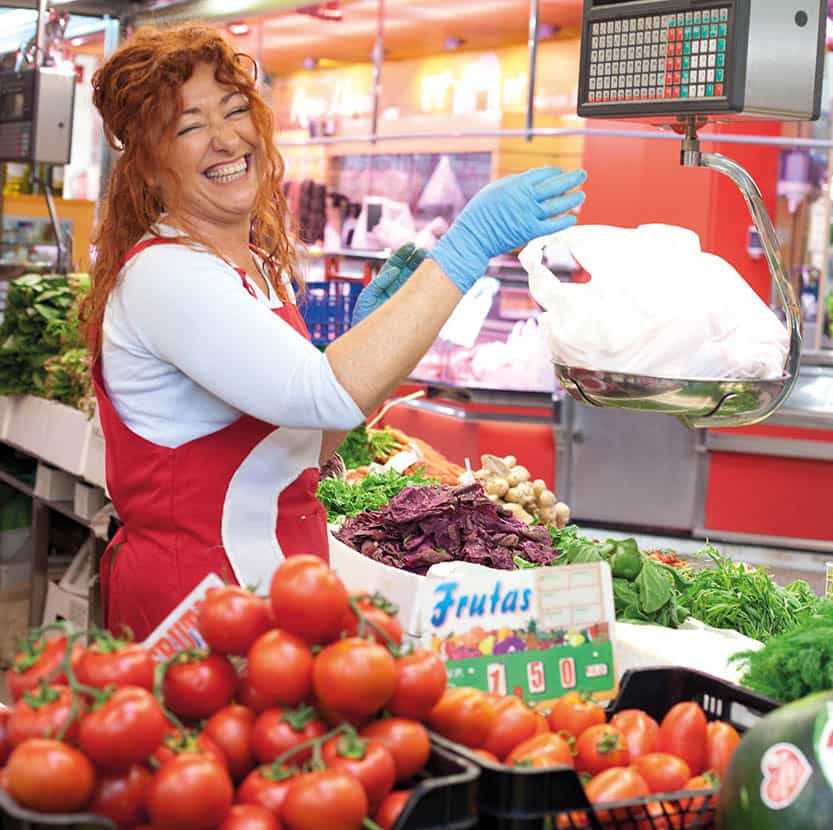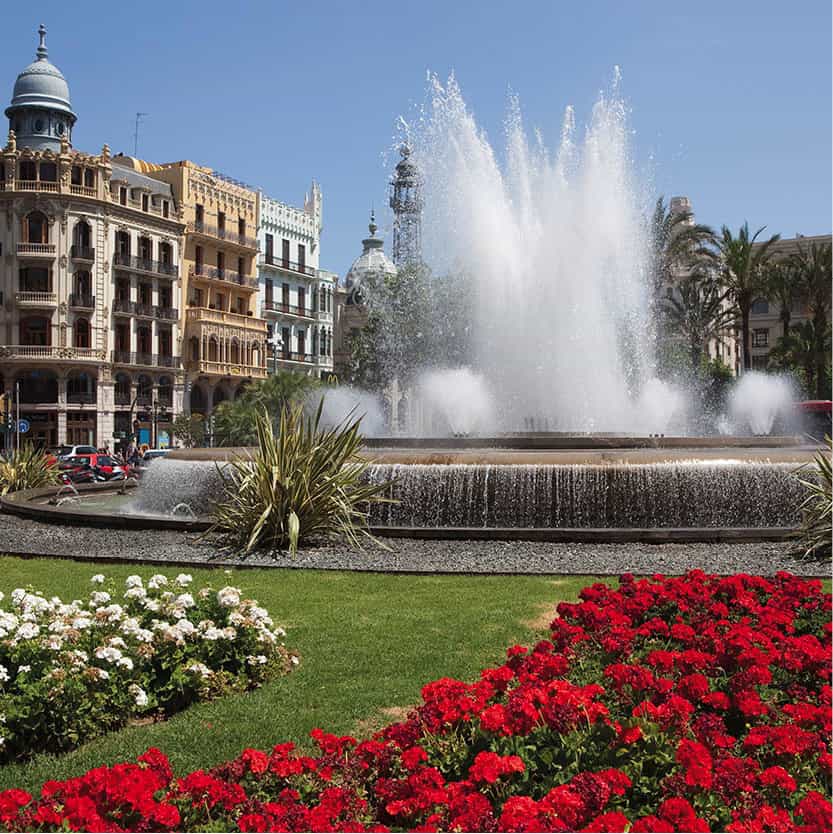If Valencians have a reputation in Spain for being a fortunate, rather blasé people, perhaps it isn’t so surprising. Spain’s third-largest city after Madrid and Barcelona, Valencia has a more privileged natural setting, a more agreeable climate and, consequently, arguably a better standard of living than either.
Founded by the Romans 2,000 years ago, it stands on a shallow scoop of a bay half-way down the Mediterranean coast. Curiously, however, the city wasn’t founded on the coast but a little way inland. Valencia, it always used to be said, had its back to the sea; with its commercial and fishing port kept at an avenue’s length from the city centre, so that it is possible to wander around its handsome monuments, squares and gardens without any sense of being by the seaside.
Dual roles
Valencia is a city of over 790,000 people. It is both the capital of a province of the same name and of an autonomous region, the Comunidad Valenciana, which stretches from the borders of Catalonia to the southern reaches of the Costa Blanca. Both city and region are bilingual with Valencian – a softer form of Catalan – enjoying equal status with Spanish (Castilian).
Neither does the city stand on a river – at least, not any more. It may have grown up on the right bank of the Turia, which flows off the high plateau in the centre of Spain into the Mediterranean, but after a disastrous flood in 1957, the decision was taken to divert the river along an artificial channel around the outer suburbs. You can still walk along the banks of what was the Turia, but you won’t be walking beside a river. Ingeniously, the redundant course has been turned into an attractive feature of a different kind: an elongated ribbon of parks and sports fields crossed by a mixture of historic and strikingly new bridges.
It might not be on the sea and no longer on a river, but Valencia still remains the hub of a prodigiously fertile plain, the huerta, an intricate mesh of market gardens, orange groves and rice fields. The harvest wealth from these fields has always been the foundation for Valencia’s prosperity and self-confidence, and the debt is duly acknowledged. Everywhere you look in the city there are motifs of fruits, flowers and a balmy country life glorified in stone and stained glass, but above all in the brilliance of multi-coloured ceramic tiles.
Valencia transformed
Yet for all its natural advantages, Valencia has never been well known abroad and until recently has received less than its fair share of foreign visitors. This is not for want of attractive qualities. Monuments it has aplenty – especially glorious Gothic buildings dating from its 15th-century heyday when it was one of the most prosperous mercantile cities in Europe. Museums and art galleries it has too, as well as gardens, elegant public squares and grand avenues lined with palms and massive ficus trees. All this in a compact, easily walkable city centre that was largely bypassed by tourists through ignorance rather than intent.

All smiles at the Mercado Central
Corrie Wingate/Apa Publications
Not any more. Simultaneously, the world has woken up to what Valencia has to offer just as Valencia itself has been waking up to the same. The city is in the grip of a new spirit for self-improvement and self-promotion. While the run-down medieval quarter of the Barrio del Carmen has been transformed into a trendy place to spend a leisurely day’s sightseeing or a night crawling between bars, one of the boldest architectural initiatives in Europe, the City of Arts and Sciences, has taken shape in the reclaimed bed of the river.
Everywhere you look, Valencia is busy re-fashioning itself – laying out new avenues and metro lines, remodelling the old and building new hotels, bridges and shopping complexes. Its port was given a facelift to receive the America’s Cup and even served as a Formula 1 circuit until 2013.
Living the good life
What is really striking about contemporary Valencia is not that it is bristling with new buildings, offices and infrastructure, but that it is learning to show off and share the simple, good things its people have always enjoyed. Living the good life is turning out to be the city’s most marketable commodity.
Proof of this begins in the central market (one of the biggest markets in Europe), which receives the unstoppable quantities of fresh produce that pour into the city daily from farms and fishing fleets. Valencian cuisine makes straightforward use of this abundance in a range of rice dishes, outstanding among them being Spain’s national dish, paella. Invented in the huerta and imitated the world over, a well-prepared paella is both colourful and appetising: it looks as good as it tastes. In restaurants all over Valencia you can eat the real thing – perhaps even cooked in the traditional way over a wood fire – outdoors among friends.
Then there is the nightlife, the so-called Moon of Valencia. In such a benign climate it’s easy to go out late and stay out late, with or without kids in tow. The extrovert parade around well-known zones of proliferating pubs (in the Spanish meaning of the word – loud, stripped-down, night-time-only seat-less bars), while anyone in search of a less raunchy time can cherry-pick from among a decent range of more sedate and sophisticated bars and cafés.
As if the energetic nightlife were not enough, Valencia punctuates the year with some of Spain’s most showy fiestas. In particular, the Fallas in March are not to be missed. A riotous week of non-stop noise and commotion culminates with the burning of giant comic sculptures in narrow streets and teeming squares.

Plaza del Ayuntamiento
Corrie Wingate/Apa Publications
Hosting the America’s Cup
In 2003 the world’s most prestigious yachting regatta, the America’s Cup, was won by a European team for the first time in 152 years. The winners were Swiss, but as the rules of the competition required them to host the next challenge in their home sea, they had to select a port in a nearby country as the venue.
Thanks to its excellent wind and wave conditions, its existing facilities and its potential for development, Valencia was selected to host the 32nd America’s Cup in 2007, a decision which greatly enhanced the city’s esteem and led to a frenzy of building. In preparation for the event, the port was split in two with one side dedicated to commerce and the other to leisure. The prestige and facilities that came with the America’s Cup have put Valencia on the Spanish tourist map in the same league as Madrid, Barcelona and Seville.
City and country
If you tire of the urban pace, there are sandy beaches to relax on; quieter towns in the Valencian hinterland to explore; and luxuriant countryside to breathe in wherever the ever-enlarging city gives up.
Country and city are united by the brilliant Mediterranean sunlight and, in spring, the wafting scent of orange blossom, or azahar. It’s no cliché to say that Valencia is a place where the senses are constantly being stimulated: there is rarely a moment of silence nor a corner where there isn’t something worth looking at. If Valencians have a tendency towards sensuality and hedonism who can blame them, and who wouldn’t want to join them for at least a while?